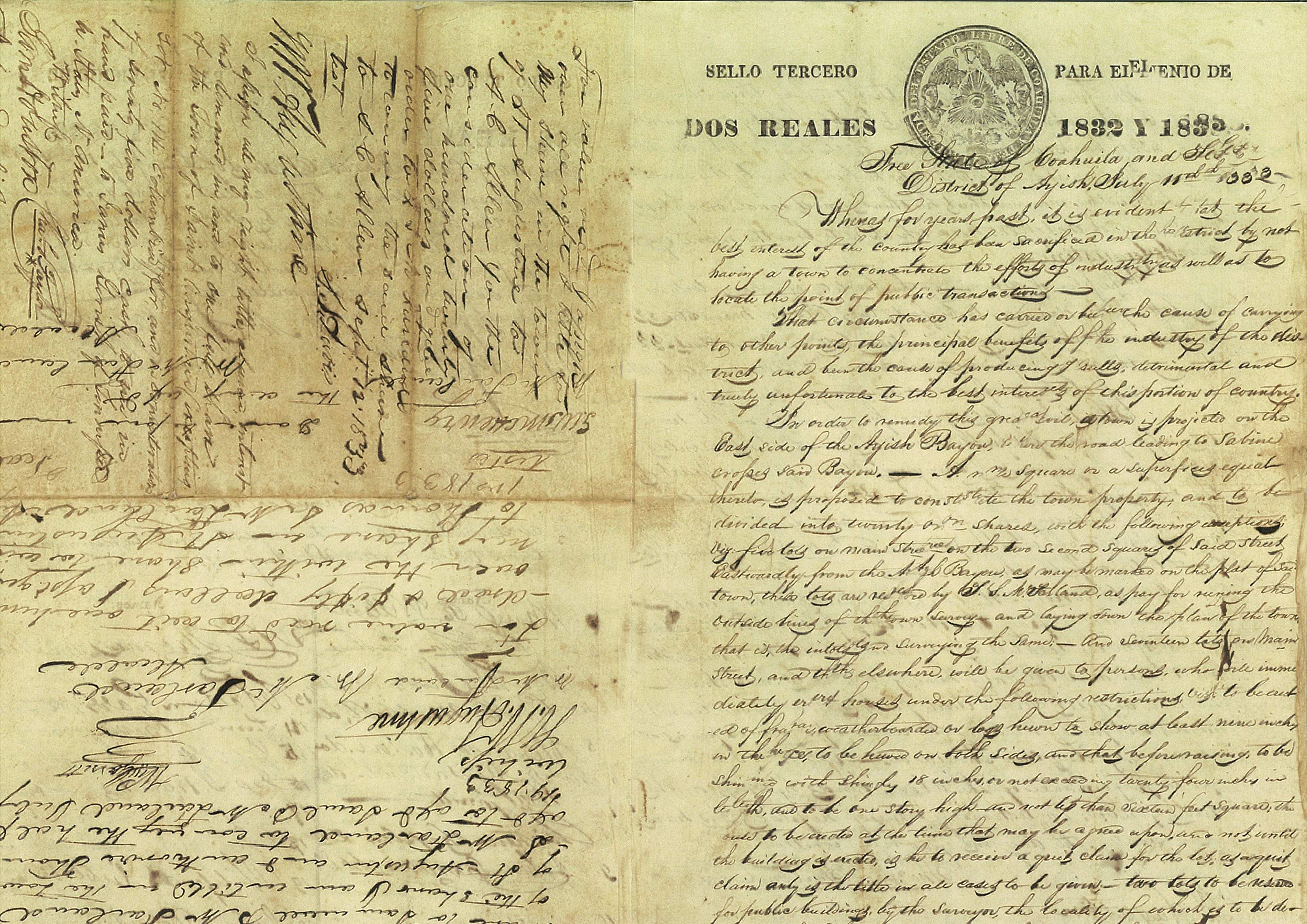The Unexpected Discovery
The Texas Story Project.

The July 2013 estate sale at Gatling Manor was a much-anticipated event by the citizens of San Augustine. Few people had visited the historic home in recent years. Located at the end of a long, tree-lined drive on south Liberty Street, Gatling Manor was barely visible from the road. Inside the house were seven generations of antiques, glassware, and treasured memorabilia owned by some of Texas’s earliest settlers, members of the Blount and Thomas families.
Conducting the estate sale was Randall Samford of nearby Center, Texas. Samford was well into appraising the home’s contents when one of his staff members brought in a trunk found in an outbuilding. The trunk contained more than two-hundred documents, including legal documents dating to the 1820s, many written in Spanish, with signatures by Stephen F. Austin, Alcalde William McFarland, Sam Houston, and a myriad of early settlers, many of whom had fought for Texas independence. No one knows for sure, but these records may have been held for safekeeping by the family’s ancestor Stephen W. Blount, the first County county Clerk clerk of San Augustine County and a signer of the Texas Declaration of Independence at Washington-on-the-Brazos.
Of special interest in the trunk of historic papers was the Founding Document of San Augustine, Texas, dated July 11, 1833, when Texas was still a part of Mexico. Headed by the seal of “The State of Coahuila and Texas,” a description of the current problem was explained:
…for years past it is evident that the best interest of the country has been sacrificed in the district by not having a town to concentrate the efforts of industry as well as to locate the point of public transactions…In order to remedy this great evil, a town is projected on the east side of the Ayish Bayou, where the road leading to Sabine crosses said Bayou.
The document continued, naming the town Saint (San, St.) Augustine and describing an original plan to surround a central square with lots and trees, a town design that followed an American aesthetic. The formation was quite the opposite of other locales in then-Mexican Texas, which followed plans specified by Spanish law. According to Dr. G.L. Crocket in his Two Centuries in East Texas, "There was no attempt to follow these instructions in the town of San Augustine. The precedent of the ordinary American town was followed, leaving the location of the public buildings to the determination of the citizens.”
Dr. Crocket commented further, "So far as I can discover this was the first town in Texas to be laid off out by such a purely American plan."
After being freed from its trunk, the 1833 founding document was purchased by Nayona Millard of Nacogdoches. Desiring to share this valuable treasure with the community, she allowed copies to be made and sold as a fundraising project benefitting the San Augustine Main Street Program. During the 180th Birthday Celebration of San Augustine, held in October 2013 during the yearly Sassafras Festival, descendants of the original twenty-one signers/subscribers of the town lots filled San Augustine County Historical Society’s Museum-Theatre to “standing room only” for a noteworthy and successful event celebrating the discovery of the lost document.
Betty Oglesbee, a graduate of the University of Texas at Austin, is co-author with her husband John of four historical books on San Augustine (The Eastern Gateway to Texas) and the Deep East Texas region.
Posted July 21, 2014